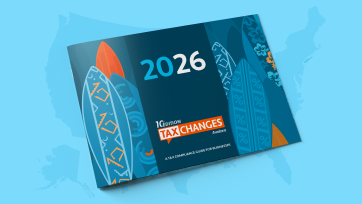Federal Universal Service Fund contribution increased by 30 percent
The Federal Universal Service Fund (FUSF) fee increased 30 percent on July 1, 2019, rising from 18.8 percent to 24.4 percent. The only other time the rate broke 20 percent was for a six-month period spanning October 2018 to March 2019. Given this dramatic rise and likely continued increase, it’s important to understand what the FUSF is, why it’s increasing, and how FUSF contributors should ensure they’re following contribution management best practices.
Federal Universal Service Fund 101
Universal service is the principle that all Americans should have access to basic “lifeline” communications services. It was a cornerstone of the Communications Act of 1934, which also established the Federal Communications Commission (FCC). Universal service policies continue to help make voice and broadband service ubiquitous, even in remote and rural areas. Special programs are focused on schools, hospitals, and the elderly.
Voice service providers are required to contribute a portion of their voice revenue to the FUSF to cover these programs. The fee is specific to interstate and international calls, whether wireless or wireline, and in some cases interconnected VoIP. The contribution amount varies each quarter and is set by the Universal Service Administration Company (USAC).
For the last 15 years, the contribution base for the FUSF has been shrinking because people are spending less money on these types of calls in favor of more data-intensive communication methods. It’s likely the contribution structure won’t continue to be sustainable, and the FCC will eventually need to find fresh sources of funding. This might require congressional intervention or significant rewriting of the regulations. Over the short term, however, the FCC will likely continue to increase the quarterly contribution factor.
Best practices to manage increases
To put things in perspective, 25 percent is far from the highest tax rate or fee businesses must pay. Vaping products currently face up to a 95 percent tax in some jurisdictions. But there are still things you can do to strategically ensure you’re minimizing your risk.
- Understand the best way to calculate your FUSF contribution: For cellular, VoIP, and paging services there are three different ways to calculate your contribution — call detail records, traffic studies, and safe harbor. Each has associated hard and soft costs, along with various calculation risks. Take a close look and see which is best for your organization.
- Carefully plan your product bundling strategy: Pay close attention to how you build your bundles as well as your stand-alone products so that you have the option separate your voice services from the full bundle price. This could be critical for not only FUSF management, but for many other taxes and fees.
- Think through revenue categories: Like building bundles, categorizing revenue for each service as both a stand-alone item and within bundles will be critical for how your contribution is calculated, regardless of what method you use. Think carefully as you devise your strategy.
If you struggle as you work through these challenging issues, or if you’re worried your program may be adversely affected by the increasing FUSF fee, consult with a communications tax advisor who can guide you through the options. Automating the associated calculation and filing processes will certainly make FUSF compliance easier. Learn more about Avalara for Communications.

Avalara Tax Changes 2026 is here
The 10th edition of our annual report engagingly breaks down key policies related to sales tax, tariffs, and VAT.
Stay up to date
Sign up for our free newsletter and stay up to date with the latest tax news.














